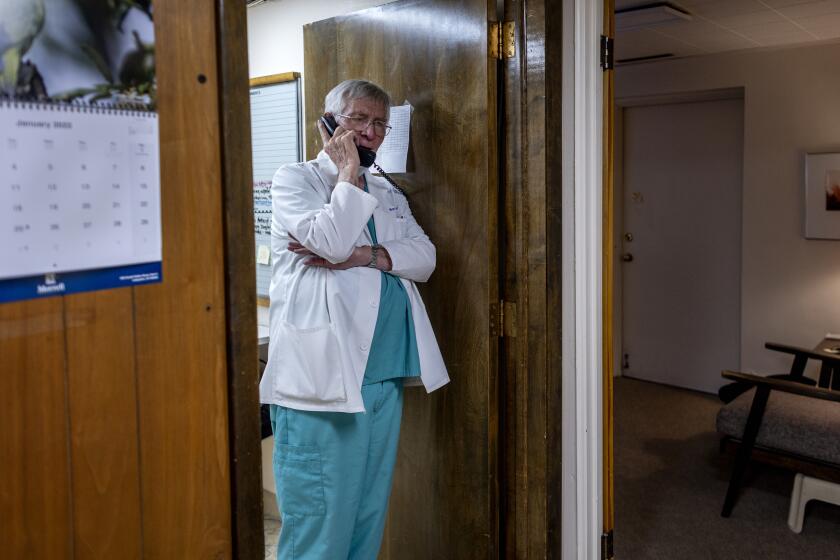Opinión: ITT Tech’s business model was unseemly — but so was the government choking it to death without a trial
The abrupt shutdown of ITT Technical Institute’s more than 130 campuses Tuesday prompted a flurry of sympathetic stories about students denied the chance to complete their degrees and teachers tossed onto the unemployment lines — along with fist-banging from conservatives about regulators executing ITT without a trial.
They have a point. The U.S. Department of Education imposed escalating sanctions on ITT based in part on the scrutiny that state attorneys general and a national accrediting body were applying to ITT, which in turn had been influenced by the Education Department’s moves. The various regulators’ actions fed off each other, trapping ITT in an increasingly deep hole.
For example, the allegations and investigations by the Securities and Exchange Commission, the Consumer Financial Protection Bureau and several state A.G.s led the Accrediting Council for Independent Colleges and Schools to examine ITT’s accreditation. After the ACICS threw ITT’s accreditation into doubt, the Education Department barred ITT in August from taking new students who received federal loans. It also demanded that ITT put up more than $150 million in collateral (bringing the total collateral requirement to nearly $250 million) within 30 days.
With only $78 million in the bank at the end of the June and its stock tanking, ITT had run out of options. Shutting down the schools was a foregone conclusion; bankruptcy is the next likely step.
There’s something unseemly about the government choking a company to death financially before it’s had its day in court. And it’s supremely ironic that the government should demand more in collateral than a company can afford to pay to guard against a default that it’s provoking. We want regulators to protect the public against fraud and predation — two of the allegations leveled against ITT — but not at the expense of due process, a core principle of American jurisprudence. When administrative actions turn into damaging sanctions, the accused should have the right to appeal.
What makes this case different, though, is that ITT was largely playing with other people’s money. And, increasingly, it was taxpayer-backed federal student loans. So regulators were responsible for protecting not just students, but also the larger taxpaying public.
Most of ITT’s students couldn’t afford the company’s comparatively high tuition, and so relied — heavily — on loans. In fact, two-thirds of ITT’s revenue in 2015 came from federal student loans. That’s not surprising; a higher percentage of students at for-profit schools borrow money than their nonprofit or public counterparts.
The Obama administration has been particularly critical of for-profit schools, arguing that they’re selling a product that’s not worth the price. In the administration’s view, too many students leave for-profit colleges without the training or skills needed to land good jobs, resulting in too many student loan defaults — many of them federal loans that taxpayers have to cover. (According to a study by the Brookings Institution, two-thirds of the defaults by students who left school in 2011 involved for-profit schools or community colleges.
Student loans lie at the heart of ITT’s regulatory problems. The SEC’s lawsuit alleges that ITT hid losses on in-house student loan guarantee programs from investors. The Consumer Financial Protection Bureau’s lawsuit alleges that ITT pressured students into taking out high-cost private loans that they wouldn’t be able to repay. The Education Department’s initial administrative actions against ITT stemmed from the company’s alleged failure to comply with federal loan regulations that protect against fraud (for example, the rule that loans be limited to students actually enrolled and making progress toward a degree).
So if ITT were an ordinary business, selling its products for cash or on terms that the vast majority of its customers could afford, it wouldn’t be in the mess it found itself in. Throw in the fact that much of its money came from federally subsidized loans, and ITT’s protests don’t seem quite so compelling.
As much as the shutdown hurts the students enrolled at ITT’s campuses (there were 45,000 last year), they may be able to transfer their credits to another institution and continue their studies. And if they can’t, Washington will forgive the amounts they owe on their federal student loans. California students also may receive money from a state fund to cover their losses on private student loans and tuition payments to ITT.
Federal taxpayers, on the other hand, have no such fallback plan. They’ll be stuck with the bill for the federal loans forgiven — up to $500 million all told.
That’s a hefty bill. Yet the track record of student loan defaults at institutions like ITT suggests that the taxpayers would have been on the hook for a steadily larger amount had ITT remained in business, saddling students with debts that they couldn’t ultimately repay.
So pick your poison. If regulators had given ITT more rope, they risked costing taxpayers more in the form of student loan defaults. Instead, the Education Department effectively cut ITT off from federal student loan dollars, the mother’s milk of higher education, without giving the company a chance to defend itself effectively against the sanctions.
Twitter: @jcahealey
More to Read
A cure for the common opinion
Get thought-provoking perspectives with our weekly newsletter.
You may occasionally receive promotional content from the Los Angeles Times.











